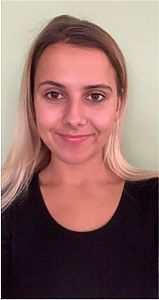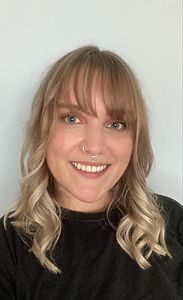Students Ola Lysien and Poppy Simmonds on their time at Space Intelligence
Ola Lysien and Poppy Simmonds – Edinburgh University MSc students, and GIS support analysts for Space Intelligence
Students Ola Lysien and Poppy Simmonds on their time at Space Intelligence
We’ve loved having Ola and Poppy in our team for the past few weeks, whilst they gave us GIS mapping support on our AI for Good project.
First up, Ola tells us that “I had an amazing time working with the team at Space Intelligence – I feel very lucky I was able to get some hands on experience working in the Earth Observation sector, somewhere where I now certainly see myself after completing my GIS Masters.

“I have learnt so much about the Scottish landscape, I am not sure where to start. I found out that a significant proportion of the Scottish land is dominated by blanket bog. With some insightful discussions during our Tuesday morning meetings, I learnt how important peatland environments are for storing large quantities of carbon and how crucial smart land management is to make sure that carbon is not released into the atmosphere.
“During my work I have certainly further developed my QGIS skills, discovering new plugins such as the SEND2GE, allowing me to inspect the relevant satellite images in Google Earth. I have learnt how to identify various landscapes in Scotland, including all five types of grass! However, what I gained from this experience was not purely technical; I have learnt how important team collaboration is for the overall success of a project. During our independent work sampling specific areas of Scotland, we have received so much help and support from analysts Keiko and Kristian who were able to respond to our questions immediately even within the virtual environment.
“Companies such as Space Intelligence showcase the potential of automated monitoring using satellite imagery. The current high resolution satellite imagery can not only give us very precise information, but allow us to perform cost effective, large scale analysis of remote areas in a relatively short amount of time. I think the ‘AI for Good Challenge’ is an ideal example of this as it uses satellite imagery to train algorithms capable of mapping all different types of landcover across the entirety of Scotland.
“The project introduced me to the concept of machine learning and its application to geospatial data. As a GIS analyst, I have found the project incredibly inspiring as it takes geospatial analysis to a new level and shows how powerful a tool the application of artificial intelligence to remote sensing data can be when addressing key global environmental problems. In the future I would like to work on similar technologically innovative projects that increase our understanding of landcover and natural resources, and generate products that can contribute towards making climate-smart decisions. I am very excited about the Earth Observation industry as it is so recent, fast evolving and has already shown so much potential to help the world tackle its climate crisis”.
Poppy also gave her thoughts on the skills and experience she’s picked up during her time with us:

“During this project, I learnt that the distribution of population in the Northern Highlands tends to follow the coastline. I noticed that the central land was dominated by tree plantations as well as the grass covered mountains. Infrastructure and farm fields were concentrated along the coastline, which I assume is resulting from the more consistently uniform topography compared to the fluctuating landscape in Central Scotland. Additionally, I learnt how important topography, moisture, wind exposure and landcover are to the diverse variety of grass types that I was unaware are numerous in Scotland.
“With a history in using QGIS, this project helped me perfect my skills in the software, as I found myself even more comfortable with the program. However, a newfound skill was an understanding of the EUNIS classification system for land use. I had not previously been aware of its extensive categorisation of European nature, which I now know the distinction between.
“From my time working with the company, I can see that there is a potential for automated monitoring using satellite imagery. This is because with the right amount of preliminary data and algorithm creation, there could be potential to install that information into satellites in order for the satellite data collection to involve land classification.
“My curiosity in the project came from my passion for pursuing a career in using GIS in correlation with environmental change. I am interested in further learning about how remote sensing can be used for environmental monitoring and plan to research further into it for my dissertation. I am currently a GIS Masters student at the University of Edinburgh, where I will complete my dissertation research. Companies like Space Intelligence are where I see myself working in the future as they are doing important work towards preserving and monitoring the planet’s endangered habitats”.
We’re so grateful to Poppy and Ola for their time and expertise, and hope to welcome them back to Space Intelligence in the future!

